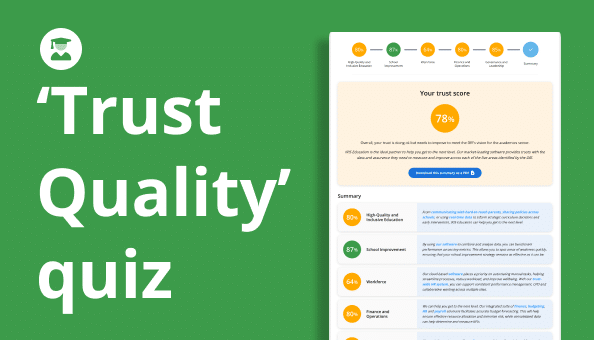BLOGS
Creating a successful digital strategy for your school

Big leaps in the use of technology in schools and multi academy trusts (MATs) were happening before the outbreak of Covid-19, but the pandemic delivered a further seismic shift in thinking.
Not least, it served as a catalyst for mass and rapid adoption of remote learning, alongside other cloud and virtual solutions.
With new technology, virtual learning environments can be crafted, more interactive learning is enabled and it is possible to create stronger relationships with parents/carers. Schools can become cashless, the admin burden is reduced and it gets a great deal easier to identify, and therefore address, issues with pupils.
Yet the adoption of technology in schools and multi academy trusts presents its own set of challenges:
- Are systems integrated and talking to each other?
- How are large volumes of data being managed?
- How can this data be refined and furthermore, how can it be used for maximum impact?
In order to roll out new technology successfully, schools must create their own digital plan, or strategy.
Data holds the key to your digital strategy
Although technology can deliver some value in isolation, the true benefit of EdTech can only be achieved with a future-ready digital strategy that prioritises the capture of high-quality data.
This hinges on trusts prioritising the integration of their systems and access to real-time, centralised data. When these factors are prioritised across all trust activities, from HR to facilities management, improved accuracy and efficiencies follow.
With quality, centralised data at the heart of a future-ready digital strategy, administrative burdens can be removed, freeing up teachers to teach. Learning also becomes more personalised, meaning that all students get an exceptional educational experience, and no child is left behind.
Achieving EdTech Nirvana
So, how do you ensure that your digital strategy is successful?
First, you need to define your vision for future-fit tech. Understand and define the end goal of what a strong school or trust looks like. What core systems need to be in place that enable this?
Performing a gap analysis for each system is essential at this stage to assess what you have and whether it is fit for purpose. While different systems will be needed to capture and store different data sets, it is integrated systems that encourage more efficient processes AND provide insights at the click of a mouse, such as how spending per teacher affects outcomes in different subject areas.
Once the vision is defined, it’s time to think about building and implementing a new digital strategy.
For this phase to be successful, it’s essential to recognise that this is a journey. Identify where you are on a digital transformation maturity curve and revisit this as you progress. Prioritise actions, be realistic about what is (and isn’t) achievable and set goals to provide a pathway to success. The best educators never quench their thirst for learning!
Next, ask yourself, is this solution agile enough to grow and adapt with your school/trust?
When systems are accessed on a subscription model via the cloud, it removes the costs associated with onsite server maintenance and offers instant scalability should it be needed. The model will also mean schools/MATs can benefit from the latest technological developments as they happen, along with enhanced security protocols.
Seek peer support from other schools/MATs and share and learn from best practice. This will help solve challenges that crop up along the way, inform new approaches and facilitate the creation of more meaningful digital strategies.
It is also crucial to bring people with you on the road to digital transformation. A trust-wide digital strategy will have a wide-ranging impact on stakeholders. These will need to be identified and managed throughout the delivery phase and communication made a priority.
The final thing to remember is that technology moves on quickly. For it to be effective, it must be continuously reviewed and refined.
Working with providers that are committed to developing solutions in line with the latest EdTech advancements will ensure you get the most out of your systems. It will also help nurture a culture of continuous improvement, empower teachers now and in the future and support all students to fulfil their potential.












